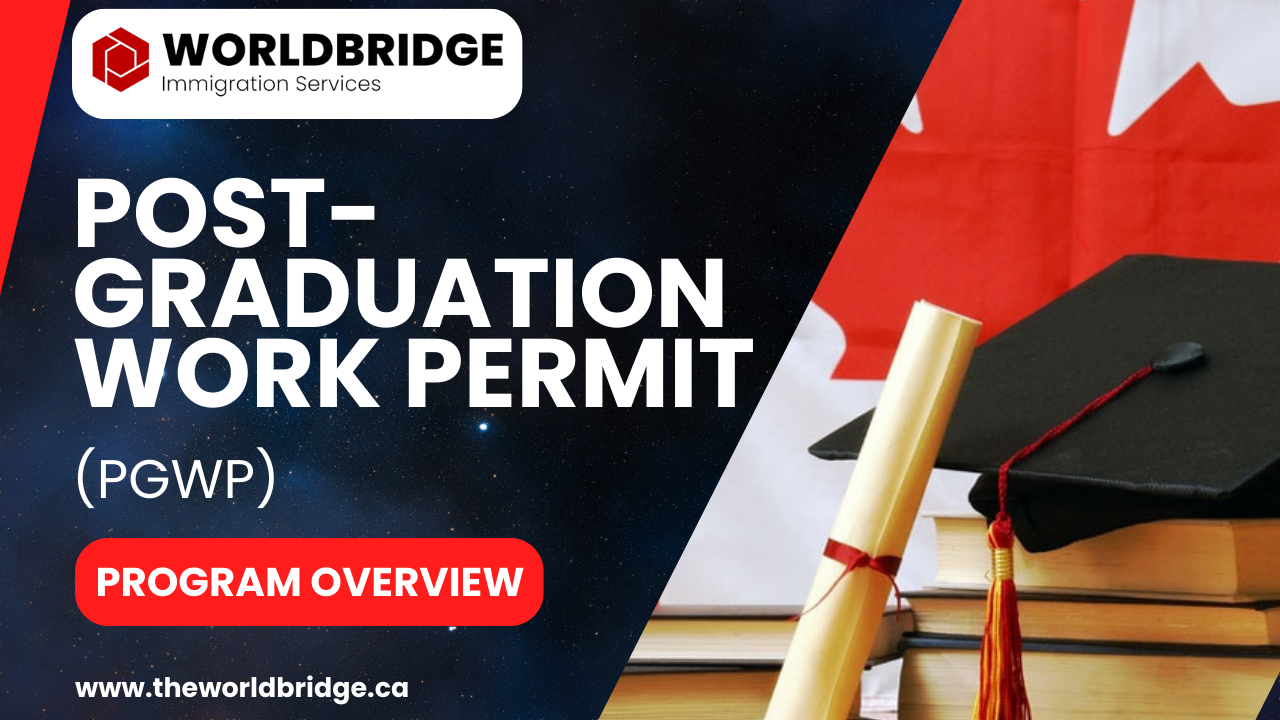Overview of Changes in Immigration Plans Canada has recently announced a significant reduction in its immigration targets over the next three years. This shift reflects a focus on existing residents, with more than 40% of permanent residents now projected to come from the temporary residents already within Canada. For many, the dream of obtaining permanent residency (PR) in Canada may remain just that—a dream—as the newly announced immigration levels mark unprecedented shifts. The targets have been significantly reduced in comparison to previous plans, with the goal of prioritizing Canadian workers and controlling the influx of foreign labor. This announcement was made by Immigration Minister Mr. Marc Miller, following earlier statements from Prime Minister Justin Trudeau. The new immigration targets for 2025, 2026, and 2027 reflect cuts across various categories. The aim is to reduce reliance on temporary foreign workers and maintain Canadian job opportunities while managing the demands on housing, healthcare, and social services. Updated Immigration Levels Plan The revised immigration levels plan reflects a substantial drop from previous targets. Canada had originally aimed to bring in 500,000 immigrants annually in 2025 and 2026. Now, this number has been adjusted to 395,000 in 2025, 380,000 in 2026, and 365,000 in 2027. The distribution of these targets across various categories reveals some key priorities: 1-Economic Immigration: The largest share of immigrants, with 232,150 spots allocated in 2025, focuses on economic needs. Within this, French-speaking immigrants have a higher priority, reflecting Canada’s goal to boost its bilingual workforce. 2-Family Reunification: A total of 94,500 quotas are assigned for family members of current residents, primarily for spousal sponsorship. 3-Refugees: Allocated 68,350 spots, this category emphasizes humanitarian commitments. The emphasis on economic immigration signals that Canada intends to welcome those who can actively contribute to the economy, particularly skilled individuals who already have experience within Canada. Increased Competition in Provincial Nominee Programs (PNP) For the first time, temporary foreign workers are included in the immigration level plan, but the competition has intensified. Provincial Nominee Programs (PNPs) have seen cuts as well, dropping from 120,000 to just 55,000 spots. This reduction highlights Canada’s intention to prioritize high-skilled workers. PNPs are now more selective, primarily targeting individuals with specific skills in demand within each province. Changes to Temporary Foreign Worker Programs Canada’s new approach includes measures that reduce reliance on temporary foreign labor by placing caps on temporary resident categories: 1.Student Permit: Quotas for students have been capped at 359,000 for the next three years. This is intended to limit the pressure on housing and social services. 2.Work Permit: For those on post-graduation work permits (PGWPs), open or closed work permits, the cap is set at 367,750 for 2025, with further reductions expected through 2027. This move marks a departure from previous policies, underscoring Canada’s aim to stabilize its infrastructure and labor market by reducing temporary work permits. Opportunities for Federal High-Skilled Workers Despite the cuts, there is a silver lining for Federal High-Skilled (FHS) workers under Express Entry. The quota for this category has increased to 124,680 in 2025, providing hope for those with skills in one of six designated categories, such as French-speaking individuals, STEM professionals, and healthcare workers. The government’s focus on French-speaking immigrants is evident, with 8.5% of immigration spots allocated to French speakers. Learning French, therefore, can be a strategic move for those seeking to increase their chances of selection. Canadian Experience Class (CEC) Focus The new immigration plan emphasizes the Canadian Experience Class (CEC) category, targeting those already living and working in Canada. With an estimated 40% of permanent residents expected to come from this group, the CEC is becoming a critical pathway for those looking to transition from temporary to permanent residency. For students and workers in Canada, gaining Canadian work experience will be crucial in qualifying for PR under the CEC. Reasons Behind the Immigration Adjustments Canada’s reduced immigration targets stem from various economic and social challenges: 1-Housing Shortage: Reducing the number of immigrants will alleviate the demand for housing, minimizing the pressure on Canada’s housing infrastructure. 2-Labor Shortages in Construction: Canada’s ability to build the necessary housing units is limited by labor shortages in the construction industry. 3-Rising Inflation and Unemployment: Increased immigration has contributed to inflationary pressures, making it difficult for Canadians to find affordable housing and jobs. Limiting immigration aims to stabilize these economic factors. Conclusion Canada’s new immigration policy reflects a shift toward prioritizing the integration of current residents over new arrivals. By reducing its overall immigration targets and focusing on high-skilled, economically beneficial immigrants, Canada aims to address its immediate economic challenges while fostering a stable environment for those already residing in the country. For potential immigrants, adapting to these changes—such as learning French or gaining Canadian work experience—can be key to realizing their Canadian dream. Let Worldbridge Immigration Services be your guide to a successful future in Canada Contact us: Website: www.theworldbridge.ca Email: info@theworldbridge.ca Phone/WhatsApp: +1-416-727-7766 Social Media: @worldbridgeHQ
AAIP 2024 Update: Alberta’s New Expression of Interest System Explained
The province of Alberta recently introduced significant changes to the Alberta Advantage Immigration Program (AAIP), unveiling a new expression of interest (EOI) and points-based system. This update represents a major shift in Alberta’s immigration landscape, creating a more structured selection process aimed at aligning applicants with the province’s labor needs. Here, we break down what’s new, what these changes mean, and how to make the most of this system. The Transition to a Points-Based Expression of Interest System In previous years, AAIP was recognized as one of Canada’s more accessible provincial immigration programs. Meeting the basic eligibility requirements generally guaranteed an opportunity to apply. In particular, the Alberta Opportunity Stream was widely popular, as it allowed a broad range of applicants, especially those already residing in Alberta, to enter the program. However, the sheer popularity of the program led to challenges. Alberta was receiving an overwhelming volume of applications, many from candidates who did not necessarily meet the province’s labor market needs. This imbalance prompted the Alberta government to re-evaluate the program and its processes. Initial Changes in 2024: Addressing the Backlog In response, Alberta paused all new applications to the Alberta Opportunity Stream on February 15, 2024. This temporary pause aimed to reduce the existing backlog and redirect focus toward high-demand sectors, including healthcare, technology, construction, agriculture, and tourism. While Alberta continued to process submitted applications, new submissions were put on hold. Reopening with Scheduled Monthly Intakes On June 11, 2024, Alberta reopened the Alberta Opportunity Stream, introducing a controlled intake system. Instead of keeping the application portal open indefinitely, Alberta designated specific intake dates throughout the year—June 11, July 9, August 13, September 10, and so on—culminating on December 10, 2024. Applications were accepted on a first-come, first-served basis until a monthly target was reached. While this system was designed to better manage application volume and reduce backlogs, it led to a race-to-file scenario, creating significant challenges. Technical issues, internet speed disparities, and system crashes prevented many qualified candidates from submitting their applications on time, causing widespread frustration among applicants and immigration professionals alike. Consequently, Alberta paused the program once again on August 7, 2024. Introduction of the Expression of Interest (EOI) System Alberta announced a more comprehensive overhaul—the Expression of Interest (EOI) system—launched on September 30, 2024. The EOI system represents a fairer and more deliberate approach, one that prioritizes candidates based on their qualifications and the province’s labor market needs. Under the EOI system, candidates will self-declare their qualifications through an online form, and each submission will be scored using a points-based grid. This scoring system is based on criteria that reflect Alberta’s economic priorities, including age, education, work experience, language skills, and family connections in Alberta. The AAIP will conduct regular draws from this pool, inviting top-ranked candidates based on their score and the province’s labor needs. Key Features of the Points-Based EOI System 1. Online Profile Submission: Candidates submit an EOI profile through the AAIP portal, detailing qualifications such as work experience, education, and language proficiency. 2. Scoring and Ranking: Profiles are scored based on a points grid. Higher scores improve the likelihood of being invited to apply for permanent residency. 3. Draws Based on Alberta’s Needs: AAIP will conduct draws from the pool, selecting top-ranked candidates based on their scores, the province’s labor market needs, and other criteria. The first draws are expected to begin in mid to late October 2024. 4. Factors Affecting Selection Beyond Points: While the points score is significant, Alberta also considers provincial labor needs, application levels, and available nominations in its selection process. Breakdown of the Points Grid The points grid reflects Alberta’s preference for young, educated, and Alberta-connected individuals. Key factors include: 1-Age: Applicants between 21 and 34 receive maximum points, while points decrease with age, with no points for those over 50. 2-Education: Higher degrees earn more points, with an additional 10 points for education completed in Alberta, underscoring Alberta’s focus on retaining locally trained individuals. 3-Work Experience: Work experience in Alberta is awarded extra points, indicating the province’s desire for candidates already integrated into the workforce. 4-Language Skills: Proficiency in English or French earns points, with bilingualism being an added advantage. 5-Family Ties and Rural Job Offers: Having family in Alberta or a job offer in a rural area, especially in a community under the Rural Renewal Stream, adds extra points. Preparing for Success in the New EOI System To maximize your chances of success in the new EOI system: 1. Review Stream Eligibility: Confirm eligibility for your chosen worker stream (e.g., Alberta Opportunity Stream, Accelerated Tech Pathway, or Rural Renewal Stream) and meet all criteria before submitting an EOI. 2. Optimize Your Score: Assess where you might improve your score. For instance, retaking a language test to achieve a higher score or gaining work experience in Alberta could be beneficial. 3. Ensure Accurate Submission: Complete your EOI profile carefully, providing truthful and complete information, as only one EOI can be submitted at a time. The introduction of Alberta’s EOI system marks a pivotal change in the Alberta Advantage Immigration Program, aiming to balance fairness, structure, and alignment with the province’s economic goals. By understanding the new points system, preparing diligently, and enhancing your qualifications where possible, you can optimize your chances of successfully navigating Alberta’s new immigration process. Let Worldbridge Immigration Services be your guide to a successful future in Canada Contact us: Website: www.theworldbridge.ca Email: info@theworldbridge.ca Phone/WhatsApp: +1-416-727-7766 Social Media: @worldbridgeHQ
NAVIGATING CANADA’S NEW SOWP RESTRIVTIONS: THREE WAYS TO BRING YOUR FAMILY TO CANADA IN 2024
Recent updates to Canada’s immigration policies have changed the eligibility for bringing family members on a Spouse Open Work Permit (SOWP). Under new guidelines, international students in undergraduate or diploma programs will no longer be able to bring their spouses, with only master’s and certain professional programs remaining eligible. Here’s a breakdown of three ways families can still achieve their Canadian dream: 1. One Partner Goes Alone First Given the long-term benefits of Canadian residency, families may consider having one partner go alone to study while the rest remain in the home country temporarily. The student can focus on studies, work part-time as allowed, and later apply for permanent residency (PR), adding the family to the application. This approach requires a few years of separation but sets up the family for PR status and eventual reunion in Canada. 2. Study Permit + Visitor Visa One spouse can enter Canada on a study permit while the other enters as a visitor, with children typically able to join for elementary or secondary education. If the visiting spouse secures an eligible job offer with a Labour Market Impact Assessment (LMIA), they can transition to a work permit from within Canada. However, this pathway requires advance planning and preparation, as success largely depends on the job market and the applicant’s skills. 3. Dual Study Permits Another option involves both spouses applying to study programs, ideally at affordable colleges, to establish a strong basis for PR applications. With careful planning, both can study, eventually apply for PR, and transition to permanent residents together. However, this requires careful budgeting and adherence to application timelines. HOW WORLDBRIDGE IMMIGRATION CAN HELP Worldbridge Immigration offers tailored support to help families navigate these changes and secure a path to Canadian residency. From consultation on study and work permits to developing a strategic plan for family sponsorship, our experts provide guidance on maximizing the potential for reunification. We also offer financial planning assistance to make dual-study and PR applications as seamless and affordable as possible. With strategic guidance, these three options allow families to work toward long-term residency while adjusting to Canada’s updated immigration policies. Also Read- How to demonstrate strong home ties for Canada study permit Let Worldbridge Immigration Services be your guide to a successful future in Canada Contact us: Website: www.theworldbridge.ca Email: info@theworldbridge.ca Phone/WhatsApp: +1-416-727-7766 Social Media: @worldbridgeHQ
How to Demonstrate Strong Home Ties for a Canada Study Permit Application: 5 Effective Tips
When applying for a Canadian study permit, demonstrating strong home ties is essential. Home ties provide assurance to the visa officer that you have reasons to return to your home country after completing your studies in Canada. A failure to convince the visa officer of your intent to return may result in a visa refusal. This article outlines five ways to effectively demonstrate home ties and increase your chances of approval. 1. Letter of Explanation A well-crafted letter of explanation is a critical part of your study permit application. In this letter, you should clearly outline your intentions to return to your home country upon completing your studies. It’s important to detail specific plans, such as career goals or further studies that tie you back to your home country. For example, if you’re pursuing a Master’s degree in civil engineering, you can explain that your goal is to apply your new skills in a local context—perhaps by starting a consultancy or contributing to national infrastructure projects. Including this information in your letter shows the visa officer that you have a defined reason to return. 2. Employment and Business Ties If you are employed, a reference letter from your employer stating that you will continue working with them upon returning home can be powerful evidence. If possible, secure a study leave approval from your employer, as it shows that they expect you to return after your studies. This demonstrates a clear professional obligation that ties you to your home country. For business owners, providing proof of business ownership, such as registration documents or tax filings, is equally valuable. By highlighting that you have a vested interest in managing your business after completing your studies, you further strengthen your case for home ties. 3. Financial and Investment Ties Possessing financial investments in your home country, such as shares, stocks, or other assets, can also signal that you plan to return after your studies. While investments can be made anywhere, ownership of local investments may indicate a stronger connection to your home country. Highlighting any local businesses or assets that require your attention, such as managing a business or overseeing an investment portfolio, further solidifies your home ties. 4. Family Connections Family ties are often a strong motivator for returning home. If your immediate family—spouse, children, or parents—remain in your home country while you study, this can serve as evidence of your intent to return. Even if your family is accompanying you to Canada, you may still have close relatives, such as siblings or extended family, in your home country. Explaining the need to be close to them, particularly in cases where you provide care or support, can help justify your return. 5. Property Ownership Owning property in your home country is one of the strongest indicators of home ties. This includes land, houses, or other real estate. Providing documents such as land titles, property deeds, or rental agreements can show that you have valuable assets waiting for your return. Additionally, you may mention your involvement in managing or developing these properties, which further binds you to your home country. While demonstrating home ties is crucial to your study permit application, it is important to approach this requirement comprehensively. Your letter of explanation, proof of employment, business interests, financial investments, family relationships, and property ownership all contribute to building a strong case. However, it’s worth noting that home ties are just one part of the visa assessment process. Ensuring your financial capability and that your proposed course of study aligns with your career objectives is equally critical to avoid rejection. At Worldbridge Immigration, we specialize in helping applicants like you navigate the complex visa application process. Whether you need assistance in drafting a compelling letter of explanation or gathering the required documents, our team is here to help. Reach out to us today to discuss your Canada study permit application and how we can assist you in achieving your educational goals. Let Worldbridge Immigration Services be your guide to a successful future in Canada Contact us: Website: www.theworldbridge.ca Email: info@theworldbridge.ca Phone/WhatsApp: +1-416-727-7766 Social Media: @worldbridgeHQ
INTERVIEW WITH MARC MILLER, CANADIAN MINISTER OF IMMIGRATION, REFUGEES, AND CITIZENSHIP
October 2024 Key Immigration Issues Addressed at Winnipeg Citizenship Ceremony On October 17, 2024, Canadian Minister of Immigration, Refugees, and Citizenship Marc Miller presided over a citizenship ceremony in Winnipeg, where over 80 new citizens from 15 different countries were welcomed. Reflecting on the significance of the event, Miller expressed how meaningful it was to administer the citizenship oath, calling it “a day these new Canadians will remember for the rest of their lives.” He noted the powerful emotions tied to such ceremonies, celebrating the hope and perseverance that new citizens bring to the country. During his visit, Miller also addressed several pressing immigration matters impacting international students, visa processing times, and broader immigration policies. International Students’ Work Hour Limit A topic of particular concern was the cap on international students’ work hours. Earlier this year, the government reinstated limits, capping work at 20 hours a week, with plans to increase this to 24 hours in the fall. Some students, like Krupa Ashroo from the University of Manitoba, voiced concerns about the financial strain caused by the cap. In response, Miller emphasized that the government is trying to balance students’ financial needs with ensuring they focus on their studies. The increase to 24 hours is seen as a compromise to help students manage their finances while prioritizing education. Immigration Levels and Provincial Coordination Miller also discussed the government’s immigration targets, explaining that while smaller provinces like Manitoba have requested more immigrants, adequate infrastructure is essential. He emphasized that provinces must be prepared to support incoming immigrants with resources like housing, healthcare, and education. Miller highlighted the importance of provincial and federal coordination in ensuring successful integration of immigrants into Canadian society. Canada-India Relations and Visa Delays In light of the recent diplomatic strain between Canada and India, Miller acknowledged that visa applications from India might experience delays due to increased scrutiny. He reassured that while this situation may impact processing times, the government remains committed to ensuring the safety of all Canadians. Supporting Palestinian Refugees Regarding the ongoing conflict in Gaza, Miller reiterated Canada’s commitment to offering financial assistance and resettlement for Palestinian refugees. However, logistical challenges have slowed the process, with only 334 refugees arriving out of over 4,000 approved applications. The Canadian government remains focused on reaching its target of resettling 5,000 Palestinian refugees. Political Climate and Trudeau’s Leadership Miller also spoke about internal dynamics within the Liberal Party, expressing strong support for Prime Minister Justin Trudeau despite speculation of dissatisfaction among party members. Miller dismissed concerns, reaffirming his loyalty and belief in Trudeau’s leadership, citing the Prime Minister’s dedication to Canada’s well-being. Key Takeaways for Worldbridge Community Members and Clients: For more updates or assistance, Worldbridge Immigration Services encourages clients to stay informed and reach out to our team for guidance Let Worldbridge Immigration Services be your guide to a successful future in Canada Contact us: Website: www.theworldbridge.ca Email: info@theworldbridge.ca Phone/WhatsApp: +1-416-727-7766 Social Media: @worldbridgeHQ
YOUR FIRST TWO WEEKS IN CANADA: ESSENTIAL TIPS FOR NEWCOMERS
Arriving in Canada is a significant milestone after all the planning and anticipation. However, the first few weeks can be overwhelming, with many important tasks to tackle. Here are some essential tips to help you prioritize what needs to be done during your initial days in Canada. 1. Obtain Your Social Insurance Number (SIN) Your Social Insurance Number (SIN) is a nine-digit number that you will need to work in Canada and access government services. You can apply for a SIN at any Service Canada location. Make sure to bring your work or study permit and your passport for identification. 2. Open a Canadian Bank Account Having a Canadian bank account is essential for managing your finances. It allows you to avoid high fees associated with transferring money from your home country. Different banks offer different services, so shop around for the best deal. Many banks offer special accounts with no fees for students. 3. Get a Local Cell Phone Plan Setting up a local phone plan is essential for staying connected and navigating your new surroundings. A Canadian phone number is also crucial when updating your résumé and contacting potential employers. Consider getting a plan that fits your needs, especially if you’re on a study permit for two years or more. Some plans offer better rates when bundled with a new phone. 4. Start Your Search for Housing Finding housing can be challenging, especially if you don’t have a credit history or references in Canada. You can ease the process by showing proof of financial stability, such as having at least ten months’ worth of rent in your bank account. Another option is offering several months’ rent upfront. If you’re struggling, consider enlisting the help of a real estate agent or a company specializing in helping newcomers. 5. Ensure You Have Health Insurance While Canadian citizens and permanent residents are entitled to public health care, temporary residents may not automatically qualify. Health care coverage varies by province, with some requiring a waiting period before you’re eligible. If you fall into this category, it’s crucial to secure private health insurance until you’re covered by the public system. 6. Register Your Children for School or Daycare If you have children, you’ll need to register them for school as soon as possible. Public education is free for children of individuals who are authorized to live in Canada. Required documents typically include passports, permits, birth certificates, and vaccination records. If your children are not yet school-aged, consider enrolling them in a daycare, though this service is paid. Permanent residents may be eligible for government subsidies to help cover daycare costs. Also Read- Understanding canadian education system 7. Begin Building Your Network Once you’ve settled some of the basic tasks, it’s time to start networking. Making connections can be a valuable way to find job opportunities and make friends, which will help you adjust to your new life. 8. Be Patient with Yourself Moving to a new country is challenging, and it’s important to be patient. It’s normal to feel disoriented and unsure of how to navigate your new environment. Give yourself time to adjust, and remember that everything will fall into place with time. 9. Take Time to Enjoy Canada Amidst all the essential tasks, don’t forget to enjoy yourself. Make sure to explore and experience some of the things you’ve always wanted to do in Canada. Whether it’s visiting the CN Tower or exploring local attractions, take the time to celebrate this exciting new chapter in your life. These tips should help you navigate your first two weeks in Canada and make the transition smoother. Stay organized, take your time, and remember that every day is a step closer to feeling at home in your new country. Also Read- Moving to Canada practical info on settling in Let Worldbridge Immigration Services be your guide to a successful future in Canada Contact us: Website: www.theworldbridge.ca Email: info@theworldbridge.ca Phone/WhatsApp: +1-416-727-7766 Social Media: @worldbridgeHQ
PROGRAMS AND COURSES NO LONGER ELIGIBLE FOR POST-GRADUATION WORK PERMIT IN CANADA (2024/2025)
As of November 1, 2024, several programs and courses in Canada will no longer be eligible for the Post-Graduation Work Permit (PGWP). This change is particularly important for those planning to study in Canada with the intent of securing a work permit post-graduation. Understanding which courses are affected will help you avoid investing time and money in programs that may not meet your immigration goals. It’s essential for prospective students, especially those applying through agents, to independently verify whether the program they are considering is eligible for the PGWP. The last thing you want is to pay tuition fees only to find out later that the course you enrolled in is not eligible. Always do your research and ensure the program you are applying for qualifies. Programs That Remain Eligible Bachelor’s, master’s, and PhD programs across all fields of study are not affected by these changes. These degrees will continue to be eligible for the PGWP. However, for students enrolling in postgraduate diplomas, eligibility will depend on specific fields of study. Courses to Avoid The following is a list of courses and programs that will no longer be eligible for the PGWP after November 1, 2024. It’s important to steer clear of these programs if obtaining a work permit after your studies is a priority: 1. Business Management: Only agricultural business management remains eligible. Pure business management programs should be avoided. 2. International Business: Programs like international agriculture are eligible, but international business and business management will no longer qualify for the PGWP. 3. Business Administration: Two-year diploma programs in business administration are no longer eligible, though MBAs will continue to qualify. 4. Project Management: Pure project management courses will not qualify, but specialized programs such as IT project management will still be eligible. 5. Human Resources: Diploma programs in human resources will not be eligible for the PGWP. 6. Marketing: Digital marketing programs remain eligible, but avoid pure marketing or business marketing programs. 7. Business Analytics and Intelligence: These programs, including business analysis, are no longer eligible for the PGWP. 8. Office Administration: Both office administration and office administration in health are no longer eligible. 9. Personal Support Worker: This program will no longer qualify unless it’s tied to specific pathways like provincial nomination. 10. Social Service Worker: Social services and social service worker programs are not eligible, though related fields may still qualify under specific conditions. 11. Tourism and Hospitality: Programs in tourism, hotel management, and hospitality will no longer be eligible. 12. Global Business: Any course in global business or global business management is no longer eligible. 13. Healthcare Management: Healthcare management and leadership programs will not qualify, except for specific programs like nurse practitioner or food service system administration. How to Verify Course Eligibility To ensure your chosen program is eligible for a PGWP, visit the Classification of Instructional Programs (CIP) website and search for the program by name. It’s important to do this research before applying for admission to avoid complications down the line. Important Considerations for Applicants Even if you receive admission into one of these ineligible programs for the 2025 academic year, you may still be affected by the new rules if you apply for a visa after November 1, 2024. Be proactive in researching the eligibility of your course to avoid surprises. For students unsure about which program to choose, seeking professional advice can be beneficial. There are experts and services available that can help review your academic profile and suggest the best options based on eligibility for post-graduation work permits. Conclusion Navigating the complexities of choosing a study program in Canada is crucial for anyone planning to secure a PGWP. With several programs becoming ineligible after November 1, 2024, it’s essential to stay informed and avoid selecting courses that could derail your post-graduation plans. Always verify the program’s eligibility, and consult with professionals if necessary to make sure your chosen path aligns with your goals for staying in Canada. Also Read – In demand programs eligible for PGWP in Canada 2025 Let Worldbridge Immigration Services be your guide to a successful future in Canada Contact us: Website: www.theworldbridge.ca Email: info@theworldbridge.ca Phone/WhatsApp: +1-416-727-7766 Social Media: @worldbridgeHQ
CANADA TO SLASH 100,000 SPOUSAL WORK PERMITS OVER THREE YEARS
Canada is preparing for a significant shift in its immigration policy, particularly affecting the spouses of international students. The government has announced plans to reduce the number of spousal work permits by more than 100,000 over the next three years, tightening the eligibility criteria for those who wish to work while their partners pursue education. These changes are primarily aimed at spouses of students who are enrolled in specific advanced degree programs. Immigration Minister Mark Miller has outlined that exceptions will be made for highly skilled students and workers in select fields. Notably, spouses of individuals pursuing doctoral or certain master’s programs at designated learning institutions will continue to be eligible for work permits. Some undergraduate programs in high-demand areas will also remain exempt from these restrictions. However, for most international students, the changes will mean stricter rules and fewer opportunities for their spouses to work. For instance, if a student is pursuing a master’s degree that is shorter than 16 months, their spouse may no longer qualify for a work permit. This move is part of a broader strategy by Canada to reshape its immigration system, which is currently under strain due to the large influx of temporary residents. In 2023 alone, more than 2 million temporary residents arrived in the country. The government aims to reduce this number, targeting a decrease from 6.5% of the population to 5% by 2026. These cuts are part of an effort to return to more manageable immigration levels after a period of growth fueled by the pandemic. Canada’s study permit system is also evolving. While master’s and PhD students won’t be affected by the study permit cap in 2024, these programs will be subject to new quotas in the following year. It has been announced that 12% of the 437,000 study permits will be capped for the next year. Although the official implementation date for the new spousal work permit restrictions has not been confirmed, the government is expected to unveil its detailed immigration levels plan on November 1. This plan will, for the first time, include specific targets for temporary residents over the next three years. The tightening of the spousal work permit rules, along with other immigration changes, signals a shift in Canada’s approach, moving away from the pandemic-era immigration surge. For those planning to study or work in Canada, these new policies will create a more selective landscape. Canada’s immigration system is clearly evolving in response to current challenges, and those affected will need to adapt to the new requirements. With immigration policies becoming more restrictive, students and their families will need to carefully navigate the changing landscape. Also Read- Canada immigration levels plan for 2024-2026 Let Worldbridge Immigration Services be your guide to a successful future in Canada Contact us: Website: www.theworldbridge.ca Email: info@theworldbridge.ca Phone/WhatsApp: +1-416-727-7766 Social Media: @worldbridgeHQ
In-Demand Programs and Courses Eligible for PGWP in 2025: New Canada Immigration Changes
With evolving changes in Canada’s immigration policies, especially regarding the Post-Graduation Work Permit (PGWP), international students and prospective applicants need to stay informed. Recent updates suggest that not all programs will continue to qualify for the PGWP in the future, making it crucial for students to choose their programs wisely. As of the latest update from Canada’s immigration authorities in September 2020, graduates from programs at public colleges will remain eligible for PGWPs of up to three years, provided their field of study aligns with occupations experiencing long-term labor shortages. This shift emphasizes the need for students to focus on programs linked to high-demand sectors, ensuring both their eligibility for the PGWP and greater career prospects in Canada. Key Updates on PGWP Eligibility Programs at Public Colleges: Graduates from these institutions will still qualify for PGWPs if they complete a program connected to occupations in demand. This is particularly relevant to public colleges rather than universities, although this distinction might change with future clarifications. Length of Study and PGWP: 1- A one-year program makes you eligible for a one-year PGWP. 2- A three-year program entitles you to a three-year PGWP. 3- Master’s and PhD graduates are presumed not to be affected negatively by these changes. Identifying In-Demand Programs To increase your chances of securing a PGWP, it is essential to select programs that align with the country’s labor needs. Here’s a list of in-demand programs and fields that are expected to be eligible for PGWP in 2025: 1. Healthcare and Medical Programs 2. Information Technology (IT) Programs 3. Engineering and Skilled Trades 4. Business and Finance Programs 5. Agriculture and Natural Resources 6. Education and Social Services 7. Architecture and Design 8. Environmental Engineering and Sustainability 9. Hospitality and Tourism 10. Transportation and Logistics Why It Matters The focus on programs tied to labor shortages ensures that graduates are equipped with skills that benefit both them and the Canadian economy. Choosing the right field not only secures a PGWP but also increases the chances of finding employment in industries that are critical to Canada’s growth. As immigration policies evolve, it is advisable for prospective students to remain informed and strategically select programs that offer strong career prospects in Canada. Conclusion Choosing an in-demand program is key for international students who aim to stay and work in Canada after graduation. Fields like healthcare, IT, engineering, and skilled trades continue to top the list of critical labor shortages. For personalized guidance on selecting a program or understanding the latest immigration updates, consider seeking one-on-one consultation through professional mentorship services. By staying informed and making informed decisions, students can optimize their opportunities for securing a post-graduation work permit and succeeding in the Canadian job market. Also Read-trade schools in Canada high paying job opportunities and faster pr after graduation Let Worldbridge Immigration Services be your guide to a successful future in Canada Contact us: Website: www.theworldbridge.ca Email: info@theworldbridge.ca Phone/WhatsApp: +1-416-727-7766 Social Media: @worldbridgeHQ
How to Craft a Winning Canadian Resume and Cover Letter
Securing a job in Canada starts with a strong resume and cover letter tailored to the Canadian job market. Canadian employers have specific preferences when it comes to resumes, so understanding the format and content they expect is crucial for success. This guide will help you create a resume and cover letter that capture attention and increase your chances of landing an interview. 1. Choose the Right Resume Format In Canada, the most commonly accepted resume format is chronological. This format focuses on your work experience, listing your most recent job first. Here’s what to include: 2. What to Exclude from Your Canadian Resume Unlike resumes in some other countries, Canadian resumes don’t include certain personal details. Avoid the following: 3. Tailor Your Resume to Each Job One of the biggest mistakes job seekers make is using the same resume for every application. In Canada, it’s essential to tailor your resume to each job posting. Carefully read the job description and incorporate keywords that match the employer’s requirements. Many Canadian companies use Applicant Tracking Systems (ATS) to scan resumes, so including the right keywords is crucial to passing through the initial screening. 4. Keep It Concise but Impactful The length of your resume matters. If you have less than five years of experience, aim for a one-page resume. If you’re more experienced, a two-page resume is acceptable. Focus on quality over quantity, and only include relevant information that adds value. Hiring managers prefer concise resumes that can be quickly scanned for key details. 5. Emphasize Work Experience Over Education Canadian employers place a strong emphasis on work experience. Be clear about your contributions in each role and use measurable achievements to demonstrate impact. For example, instead of saying you “managed a team,” say you “led a team of 10 employees, resulting in a 15% increase in productivity.” Numbers and results help paint a clearer picture of your effectiveness. 6. Writing an Effective Cover Letter Your cover letter should complement your resume, not repeat it. It’s your opportunity to expand on your qualifications and explain why you’re the perfect fit for the job. Structure it like this: Final Insights Crafting a Canadian resume and cover letter that stands out requires attention to detail, customization, and clarity. By following these tips and adhering to Canadian standards, you’ll improve your chances of impressing employers and securing interviews. Remember to focus on your achievements, avoid unnecessary details, and always tailor your resume to the job you’re applying for. This approach will help you present yourself as a qualified and competitive candidate in the Canadian job market. Also Read- New canada work permit wage requirement Let Worldbridge Immigration Services be your guide to a successful future in Canada Contact us: Website: www.theworldbridge.ca Email: info@theworldbridge.ca Phone/WhatsApp: +1-416-727-7766 Social Media: @worldbridgeHQ










